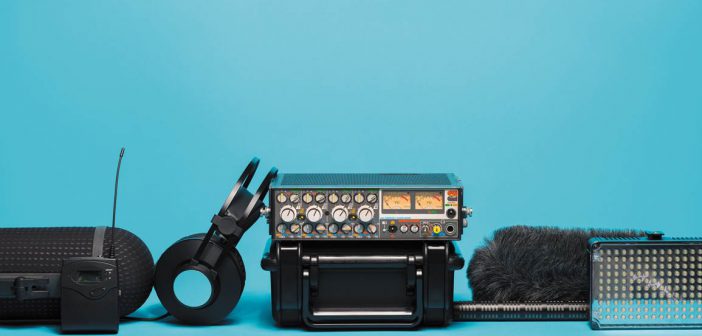by Brad Grimes
According to a recently published AVIXA report, the global market for audiovisual (AV) technology in hospitality is forecast to reach $7.5 billion for 2019 and grow at a compound annual growth rate (CAGR) of 6 percent through 2023; hospitality brands are increasingly turning to AV technology to elevate their guest experience and optimize internal operations.
From enabling guests to operate window shades, thermostats, and lighting, all from their personal devices, to transforming ordinary lobbies into glitzy nightclubs, AV technology is creating memorable experiences for guests and points of competitive differentiation for brands. Here are five ways that hotels, restaurants, and more are using technology to usher in a new generation in hospitality.
Transforming Open Spaces
Hotel lobbies are usually large open spaces with seats scattered throughout, and are generally viewed as places to travel through, not destinations.
When the W New York – Times Square sought to change this perception and elevate the appeal of its second-floor main lobby, it created a tribute to Times Square, which is located just a few blocks away. Offering a lively atmosphere that shifts from a bright, airy daytime setting to a vibrant, colorful nightclub setting with a custom DJ booth, the space houses custom neon lighting, vibrant signs, and a digital countdown clock that’s almost 7 feet tall.
Hidden speakers deliver high-quality audio to 32 independent zones, with many speaker arrays directed at individual guest seating booths where patrons can control the volume for their specific zone. Using touchscreen-based entertainment control systems, W New York staff also can adjust every light and speaker to produce the desired atmosphere from a selection of presets.
Putting Smart Devices in Guest Rooms
With app- and voice-based home control systems growing in popularity and acceptance, hotel guests increasingly expect personalized control of their room’s lights, shades, media, and thermostat from a smartphone or tablet.
The 1 Hotel near the Brooklyn Bridge was constructed with this in mind, integrating the latest in automation, AV, communications, and energy management in all the guestrooms, as well as public spaces, ballrooms, and the rooftop pool deck. Smart technology ensures that 1 Hotel remains “green” and provides guests with advanced control of lighting, shades, and climate.
To make each guest’s stay as smooth as possible, all of the lights in the room can be turned off with a single “Good Night” button located beside the bed, while the classic “Do Not Disturb” door hangers have been replaced by a button to request privacy. The automation system also ties into a backend platform with energy-usage statistics that provide hotel management with a tool to track and improve sustainability.
Improving Navigation with Large-Scale Displays
To provide better, larger maps for navigating the hotel and surrounding neighborhoods, the Hyatt Regency McCormick Place in Chicago installed four large LCD video walls at key points in the lobby, in corridors and at entrances and exits. With one located behind the concierge desk, two at opposite ends of a high-traffic ground-floor hallway, and another at the base of an escalator, guests can always find their way to their destination quickly and easily.
The displays are sufficiently bright to overcome direct sunlight entering through large windows on the south side of the building, and all four are controlled and updated from a small rack behind the concierge desk. Beyond wayfinding, the video walls are also used for promotions, advertising, and communications, such as signage packages during a trade show or custom messaging that supports branding efforts for the Hyatt Regency’s local city partners.
Making a Hotel Feel Like Home
There is a clear trend among hotels to make the guest experience more like home by creating inviting and familiar rooms and spaces. For example, Marriott Hotels updated a 30-year-old property in Charlotte, NC, turning it into an inviting, flexible, and modern space.
The check-in area includes a touchscreen monitor where guests can find their reservation, while a public kitchen, open to all guests, serves as a central place to socialize. In addition to the very latest in kitchen appliances, multiple 55-inch OLED televisions provide entertainment. The impetus for this space? Marriott recognized that when friends get together, they inevitably wind up in the kitchen, and it’s proven to be more popular than the hotel bar.
As for the guest rooms, all 444 of them feature a 55-inch LCD TV that serves as a hub for in-room information and entertainment. Hotel and local area information is at each guest’s fingertips, and the TVs allow guests to stream Netflix, Hulu, YouTube, and Pandora from their smart devices directly to the big screen.
Redefining Restaurant and Bar Space
For sports bars and social clubs, it is crucial that no patron is left out of the audiovisual action.
When Lodging Hospitality Manage-ment opened The Westport Social, a 13,000-square-foot classic bar and gaming lounge packed with amenities and entertainment, they chose to use large-scale fine-pitch LED video walls to ensure that every seat is the best seat in the house.
Three 16-foot-long, 9-foot-high LED video walls are each complemented by four smaller widescreen video displays that show alternate channels, giving patrons a total of 15 different screens to watch live sports.
As elaborate as The Westport Social installation is, each one of the 15 displays can be controlled by any employee using nothing more than an iPad. This allows the morning and evening shifts to turn everything on or off with one button, as well as change channels and switch from a single screen to a quad view.
As consumers increasingly rely on modern technologies to navigate their daily lives, hoteliers that integrate AV experiences will offer meaningful benefits to guests and differentiate themselves from the competition. By offering enhanced services such as personalized control of guest room electronics, on-demand wayfinding through digital displays, and the latest audio, video and lighting systems in restaurants and lobbies, the hotel industry will continue to improve guests’ stays and attract new generations of travelers.
Brad Grimes is senior director of communications for AVIXA the Audiovisual and Integrated Experience Association. AVIXA represents the $186-billion global commercial AV industry and produces InfoComm trade shows around the world. For more information, visit www.avixa.org/hospitalityAV.




